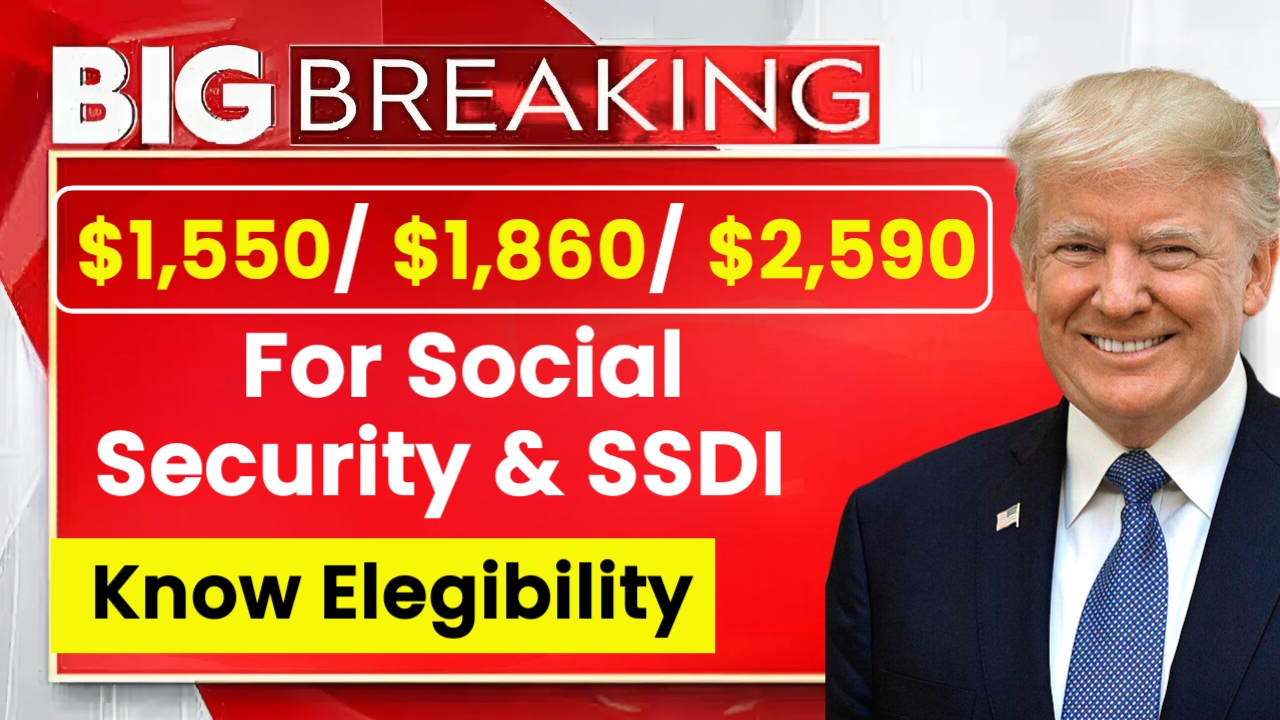The Social Security Administration (SSA) has established multiple payment tiers for Social Security and Social Security Disability Insurance (SSDI) benefits, with payments of $1,550, $1,860, and $2,590 available to eligible recipients. These payments aim to provide essential financial support to disabled, retired, and low-income Americans who meet specific eligibility criteria.
Payment Structure Overview
The SSA has designed a tiered payment system to address different needs:
- $1,550 tier primarily supports disabled individuals
- $1,860 tier focuses on retired workers
- $2,590 tier assists those with severe disabilities or blindness Each tier has specific eligibility requirements and is distributed according to a predetermined schedule based on recipients’ birth dates.
Payment Schedule and Distribution
The SSA follows a structured distribution schedule based on beneficiaries’ birth dates:https://email.loadserve.dev/newsletter-form.php?id=form_1729939170576
- 1st to 10th of the month: Payments arrive on the second Wednesday
- 11th to 20th: Payments distributed on the third Wednesday
- 21st to 31st: Payments sent on the fourth Wednesday Recipients who started receiving benefits before May 1997 receive their payments on the 3rd of each month.
Eligibility for $1,550 Payment Tier
To qualify for the $1,550 payment, recipients must meet several criteria:
- Have a qualified disability recognized by the SSA
- Maintain a monthly income at or below $1,550
- Have an established relationship with the SSA
- Demonstrate a disability lasting more than one year
Requirements for $1,860 Payment Tier
The $1,860 payment tier targets retired workers who:
- Hold U.S. citizenship
- Have monthly income not exceeding $1,860
- Meet retirement age requirements (between 67 and 70)
- Have sufficient work credits with Social Security
Qualifications for $2,590 Payment Tier
The highest payment tier of $2,590 supports those with severe challenges:
- Must qualify as disabled or blind
- Monthly income cannot exceed $2,590
- Must have documented employment history with Social Security
- Condition must persist for over one year
Managing Social Security Benefits
Recipients should follow several key practices to manage their benefits effectively:
- Regular monitoring of SSA updates and policy changes
- Annual review of eligibility criteria
- Prompt reporting of circumstance changes
- Careful monthly budget planning
- Maintaining accurate records
Important Considerations
Beneficiaries should keep in mind several factors:
Advertisements
- Payment amounts may change annually
- Eligibility criteria are subject to review
- Income changes must be reported promptly
- Medical condition updates may affect benefits
- Regular communication with SSA is essential
Future Planning and Adjustments
Recipients should prepare for potential changes by:
- Monitoring SSA announcements
- Maintaining updated personal information
- Planning for cost-of-living adjustments
- Understanding benefit review processes
- Keeping documentation current
Conclusion
The SSA’s tiered payment system provides crucial support to various groups of Americans in need. Understanding eligibility requirements, payment schedules, and proper benefit management is essential for recipients. Regular monitoring of official SSA communications and maintaining accurate records helps ensure continuous, uninterrupted benefits. Recipients should stay informed about program changes and maintain open communication with the SSA to maximize their benefit utilization.
